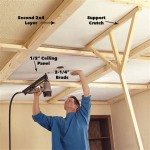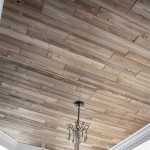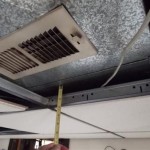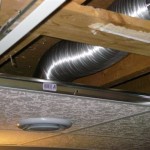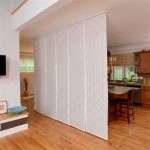However, closing sentences that re-explain the central focus are acceptable.
Furnace Vents in Ceiling: Understanding Their Function and Placement
Furnace vents strategically located in the ceiling play a critical role in distributing heated air throughout a building. The effectiveness of a forced-air heating system hinges on proper vent design, placement, and maintenance. Understanding these aspects is essential for optimizing heating efficiency, ensuring even temperature distribution, and maintaining indoor air quality.
Unlike floor vents which tend to warm the lower portions of a room first, ceiling vents leverage the natural principles of convection to more evenly distribute heat from the top down. This approach can be particularly useful in rooms with high ceilings or where warm air tends to stagnate.
The Physics of Heat Distribution and Ceiling Vents
The fundamental principle behind ceiling vent placement lies in the behavior of heated air. Warm air, being less dense than cold air, naturally rises. By introducing warm air near the ceiling, furnace vents allow it to gradually descend and circulate throughout the room, mixing with cooler air. This process helps to eliminate cold spots and create a more uniform temperature profile. Without proper vent placement, warm air might pool at the ceiling, leaving the floor level significantly cooler.
However, solely relying on convection is insufficient for uniform heating. Modern HVAC systems incorporate fans and ductwork to force air circulation. The velocity and volume of air exiting the ceiling vents are carefully calculated to optimize the mixing process. Insufficient airflow can lead to stratification, where layers of air with different temperatures develop within the room. Overly forceful airflow, on the other hand, can create drafts and discomfort.
The shape and design of the vent itself also influence air distribution. Different vent styles, such as directional vents and diffusers, are designed to disperse air in specific patterns. Directional vents allow users to adjust the direction of airflow, while diffusers spread air more evenly across a wider area. The choice of vent style depends on the room's dimensions, layout, and desired heating characteristics.
Furthermore, the insulation levels within the building envelope significantly impact the effectiveness of ceiling vents. In poorly insulated buildings, heat can quickly escape through the walls and roof, negating the benefits of efficient air distribution. Proper insulation helps to retain heat and allows the HVAC system to maintain a comfortable temperature with less energy consumption. Therefore, ensuring adequate insulation is a prerequisite for maximizing the performance of ceiling vents.
Factors Influencing Optimal Ceiling Vent Placement
Determining the ideal placement of ceiling vents involves considering several factors, including room size, ceiling height, window locations, and furniture arrangement. A professional HVAC technician can perform a load calculation to determine the heating requirements for each room and design a ductwork system that delivers the appropriate amount of heated air through strategically placed ceiling vents.
In larger rooms, multiple ceiling vents may be necessary to ensure even heat distribution. The vents should be spaced appropriately to avoid creating dead zones or areas with insufficient airflow. For rooms with high ceilings, diffusers are often preferred to spread the warm air over a wider area and prevent it from pooling at the ceiling. The distance between the ceiling and the occupied zone should also be considered when selecting vent styles and airflow rates.
The presence of windows can significantly impact heating requirements. Windows are often a source of heat loss, particularly in older buildings with inadequate window insulation. Ceiling vents should be positioned to compensate for heat loss near windows, either by directing warm air towards them or by placing vents nearby. This helps to counteract the chilling effect of the windows and maintain a consistent temperature throughout the room.
Furniture arrangement can also affect airflow patterns. Large pieces of furniture can obstruct airflow from ceiling vents, creating cold spots or uneven heating. Vents should be positioned to avoid being blocked by furniture. Sometimes, minor adjustments to furniture placement can significantly improve heat distribution. Careful consideration of furniture layout is essential for optimizing the performance of ceiling vents.
The overall layout of the house also plays a role. Rooms furthest from the furnace might require larger duct runs or supplementary heat sources. The ducting system itself must be properly sized and insulated to minimize heat loss. Balancing dampers within the ductwork allow for fine-tuning the airflow to each vent, ensuring that each room receives the appropriate amount of heated air.
Maintenance and Troubleshooting of Ceiling Furnace Vents
Regular maintenance is crucial for ensuring the continued performance of ceiling furnace vents. Dust and debris can accumulate on the vents, restricting airflow and reducing heating efficiency. Cleaning the vents regularly helps to maintain optimal airflow and prevent the buildup of allergens and pollutants.
The easiest maintenance task is simply vacuuming the vents regularly using a brush attachment. This removes surface dust and debris. For more thorough cleaning, the vent covers can be removed and washed with soap and water. Be sure to dry the vent covers completely before reinstalling them to prevent mold growth.
One common problem is uneven heating. This can be caused by several factors, including blocked vents, improperly sized ductwork, or unbalanced airflow. Check to ensure that all vents are open and not obstructed by furniture or other objects. If some rooms are consistently colder than others, adjust the balancing dampers within the ductwork to increase airflow to the colder rooms. If problems persist, a professional HVAC technician may need to inspect the ductwork and system components.
Another common issue is excessive noise from the vents. This can be caused by loose vent covers, vibrating ductwork, or excessive airflow. Tighten any loose screws on the vent covers and inspect the ductwork for vibrations. Reducing the airflow to the vents can also help to reduce noise levels. An HVAC professional can properly diagnose the cause and implement solutions.
Condensation can sometimes form around the ceiling vents, particularly in humid climates. This can lead to mold growth and damage to the ceiling. Ensuring adequate ventilation in the room and addressing any sources of excess humidity can help to prevent condensation. Insulating the ductwork can also help to prevent condensation from forming on the exterior of the ducts.
In conclusion, the effective function of ceiling furnace vents relies on understanding the physics of heat distribution, careful consideration of placement factors, and consistent maintenance practices. Proper application of these points contributes to optimal heating efficiency and indoor comfort.

The Benefits Of Using Ceiling Hvac Vents

Ceiling Ac Vents Pros And Cons Aire Serv

Changing All My A C Heating Ceiling Vents For Better Airflow Between Naps On The Porch

Why Adding A Return Air Vent Improves Your Home S Comfort Bird Family Insulation

Ceiling Ac Vents Pros And Cons

How Do You Clean Heating Ducts In The Ceiling Duct Masters

Changing All My A C Heating Ceiling Vents For Better Airflow Between Naps On The Porch

Heating Vents Greg Maclellan

Heating Vents Greg Maclellan

Proper Placement Of Ductwork Affordable Comfort
Related Posts

